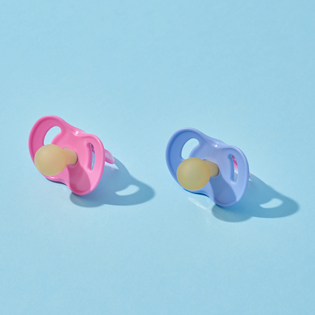The great outdoors come with a lot of perks — and pests. Ticks, in particular, can transmit potentially dangerous illnesses like Lyme disease. Fortunately, most of these infections are fully treatable, as long as they're caught early on. Here's your guide to removing ticks and treating tick bites in kids.
How to check for ticks on children
Whenever your little one has spent time in grassy or wooded areas when the temperature’s above freezing, inspect her for ticks and other insect bites. Do a bug body scan, looking carefully in the following areas:
- In and around the hair
- In and around the ears
- Inside the belly button
- Between the legs
- On the backs of the knees
Check her clothing for ticks too, and toss the clothes in the dryer on high heat to ensure a stowaway doesn't sneak into your home. It's also a good idea to bathe your kids soon after they've been out in the grass or woods. Bathing may help wash off unattached ticks and it's a good opportunity to do a tick check.
How to remove a tick on a child
Unlike mosquito bites, a tick likes to hang around by burrowing its head into the skin. So how do you remove a tick from a baby, toddler or older child? If you do spot a tick on your little one's body, here's what to do:
First, use a warm, wet cotton ball.
Soak a cotton ball in warm, soapy water and let it sit on your child's skin for 30 seconds. When you remove the ball, the tick will usually come with it.
If that doesn't work, remove the entire tick with tweezers.
Grasp the tick firmly at its head or mouth (near your child’s skin), and pull firmly and steadily until it lets go. Do not jerk or twist the tweezers while removing a tick, or you may come away with just the tick’s body. If that does happen, don't worry as the rest will fall out in time. Just be sure to get your child tested for Lyme disease.
Read This Next
Skip the petroleum jelly, rubbing alcohol and lit matches.
These antiquated ways to remove a tick can make things worse by causing a tick to dig in deeper.
Wipe down the bite site.
After removing the tick, clean the area with warm soap and water and apply an antibiotic ointment like Neosporin once to the bite site.
Safely stash the tick for later.
Seal it in a plastic bag or jar, if possible, so you can take it to your pediatrician. The doctor should be able to tell you whether it's the type of tick that spreads either Lyme disease or another tick-borne illness.
Black-legged ticks can carry the type of bacteria that causes Lyme disease. Also called deer ticks, they're dark brown to black in color with dark legs. They're about the size of a pencil tip, poppy seed or sesame seed depending on how old they are. Black-legged ticks are most common in the Northeast and Upper Midwest, and the western black-legged tick also spreads the disease along the Pacific Coast.
Symptoms to watch for after a tick bite
If your child is bitten by a tick, it's important to keep an eye out for the telltale symptoms of Lyme disease:
A red rash
Lyme disease’s signature symptom is a rash that turns into a red bull’s-eye ring. It typically appears within a few days around the bite site. Though not everyone infected with Lyme gets (or notices) a rash, it occurs in 70 to 80 percent of Lyme disease cases, according to the Centers for Disease Control and Prevention (CDC).
If you see such a rash crop up, take your child to the pediatrician right away. Doctors can easily treat Lyme disease with antibiotics, but the treatment works best when started at the first sign of infection.
Flu-like symptoms
Other early signs of Lyme disease include flu-like symptoms such fever, chills, nausea, headache, joint pain, swollen lymph nodes, poor appetite and neck stiffness.
If you don't notice anything amiss, rest easier knowing that infection with Lyme disease is relatively rare, occurring in between 1.2 and 1.4 percent of cases of deer tick bites. You can always check in with the pediatrician just to be extra careful.
How to prevent tick bites on kids
The next time you’re planning to spend time outdoors, try these tips to help ward off ticks:
- Dress your child in a long-sleeved shirt and long pants before taking a walk in the woods or in tall grass, where ticks like to hang out. Tuck the bottom of her pants into her socks.
- Treat clothing with permethrin, a type of insect repellent that immobilizes ticks on contact.
- For kids 2 months and older, apply an insect repellent containing between 10 and up to 30 percent DEET on skin that isn’t irritated, cut or sunburned (except her face, near her eyes or on her hands). DEET also keeps mosquitos and spiders at bay. Reapply as directed, and keep in mind that insect repellent should be applied after sunscreen.
- Take extra care if you’ve been in the woods or grassy fields. Ticks love humid, moist places near wooded or grassy areas — like piles of leaves — so check your baby or toddler for ticks vigilantly after visiting these places.
When to call the doctor about tick bites
Your pediatrician may want to see your child — and will likely ask you to bring in the tick too — now or within the next two weeks if:
- You're unable to remove the tick or the tick head.
- The tick may have been on the skin for more than 24 hours; the tick usually has to remain attached to the host for between 36 and 48 hours to transmit Lyme disease.
- Your child has flu-like symptoms including fever, headache, fatigue and vomiting.
- Your child has muscle aches, joint pain or a headache.
- Your child has a bull's-eye-shaped or circular red rash near the bite.
- Your child has red dots on the ankles and wrists, which is a sign of Rocky Mountain Fever, another tick-borne disease.
- The bite looks infected — for example, it's warm, swelling, oozing pus or painful.
Luckily, most ticks do not carry Lyme disease. And when an infection does occur, it’s highly treatable. Just keep an eye out for these pesky parasites — and take steps to keep them away from your little one.











































 Trending On What to Expect
Trending On What to Expect





